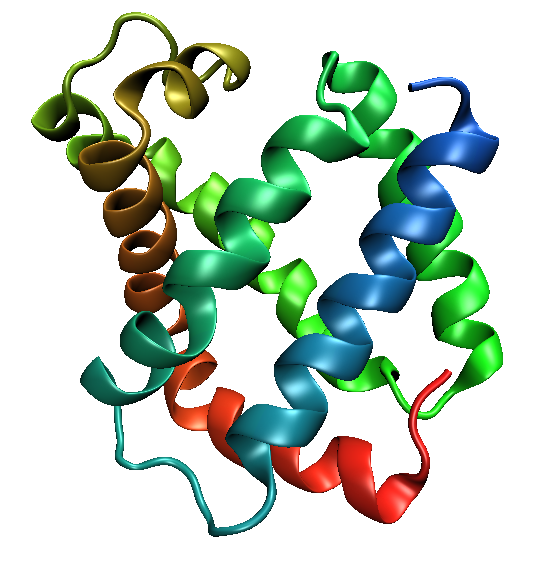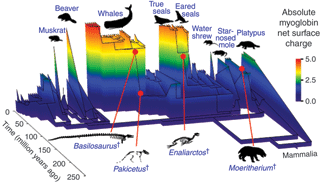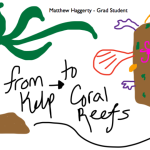David Aldridge is a phytoplankton-loving marine biology PhD student at the National Oceanography Centre in Southampton, UK. Also the founder and editor of Words in mOcean, a website dedicated to publishing blog posts and features on marine science. We’ve asked David to guest post for us here at DSN. Enjoy!
We’ve all tried this before in a swimming pool or in the ocean, I’m sure: you hold your breath, dive under water, and try to swim as far as you can in an attempt to imitate that killer whale you saw at SeaWorld. After what feels like a life-time, but in all reality is a pitiful 30 seconds of lung-burning agony, you splutter to the surface gasping for oxygen like Newt Gingrich after 10 minutes on a treadmill. You ask yourself, “How on earth does Shamu do that?” The key to how marine mammals manage to hold their breath for so long — for well over an hour in the case of elephant seals and sperm whales — lies largely within their muscles, which are jam-packed full of myoglobin. Myoglobin is haemoglobin’s close relative; and like most close relatives, it’s really good at showing up its inferior relation. It ferociously sucks up and holds onto oxygen, and is also less prone to being damaged by the acidic environment in muscles that follows oxygen-starvation; it is just what a diving sea creature needs. We also have myoglobin in our muscles, but marine mammals can have more than 30 times the amount that we do. As a general rule, the more myoglobin in the muscles of a mammal, the longer it can “hold its breath”.

A group of scientists, led by Scott Mirceta from the University of Liverpool in the UK, have modelled the evolutionary history of myoglobin over the last 200 million years. They show that as marine mammals evolved, not only did the amount of myoglobin in their muscles increase, but that the myoglobin proteins became increasingly charged (less “sticky”), and therefore better able to repel each other, and do their job, whilst still carrying plenty of oxygen to the muscles. The scientists also managed to estimate how much myoglobin was found in the evolutionary ancestors of many marine mammals. The study provides many insights into the evolution of dolphins, whales, seals, and sea lions from terrestrial mammals — resembling you or me gasping for oxygen in a swimming pool — to the slick divers they are today.

The ancestors of modern Paenungulates (a taxa including elephants, manatees and dugongs) were shown to be the first group of land mammals that took to the sea more than 64 million years ago. After making the water their home, increases in body size were a big evolutionary advantage allowing organisms to dive for longer (larger organisms can store more myoglobin and also have lower metabolisms). This is one reason why many marine mammals are so much bigger than their land-dwelling relatives.

One finding which perhaps isn’t too surprising is that the ancestors of today’s whales, dolphins, seals and walruses had low levels of myoglobin when they first ventured into the sea. They would have been pretty damn useless at diving for any sustained period of time and almost certainly foraged for food, and went about their everyday business, in shallow waters. Some creatures, such as the manatees, never really changed; they have low myoglobin concentrations in their muscles to this day and eek out their existence feeding on seagrass in shallow waters. But those organisms that began to pack their muscles with myoglobin were able to dive deeper and longer and, in the process, opened up a whole new world of feeding opportunities for themselves. They evolved from inelegant oxygen-gasping animals feeding near the surface, to highly refined deep-diving marvels of the ocean, capable of holding their breath for up to an hour, or more, and diving hundreds to thousands of metres beneath the surface. All they needed was millions of years of evolution. Unfortunately, you and I don’t have that sort of time. In the absence of a culture of “myoglobin-doping” (don’t laugh, cyclists are already talking about it!), it looks like we will have to make do with our pathetic 30 seconds of underwater suffering the next time we are in the water.






Now you have me wondering what controls the urge to breathe in marine mammals. Because myoglobin wouldn’t slow down the buildup of carbon dioxide in their blood, would it?